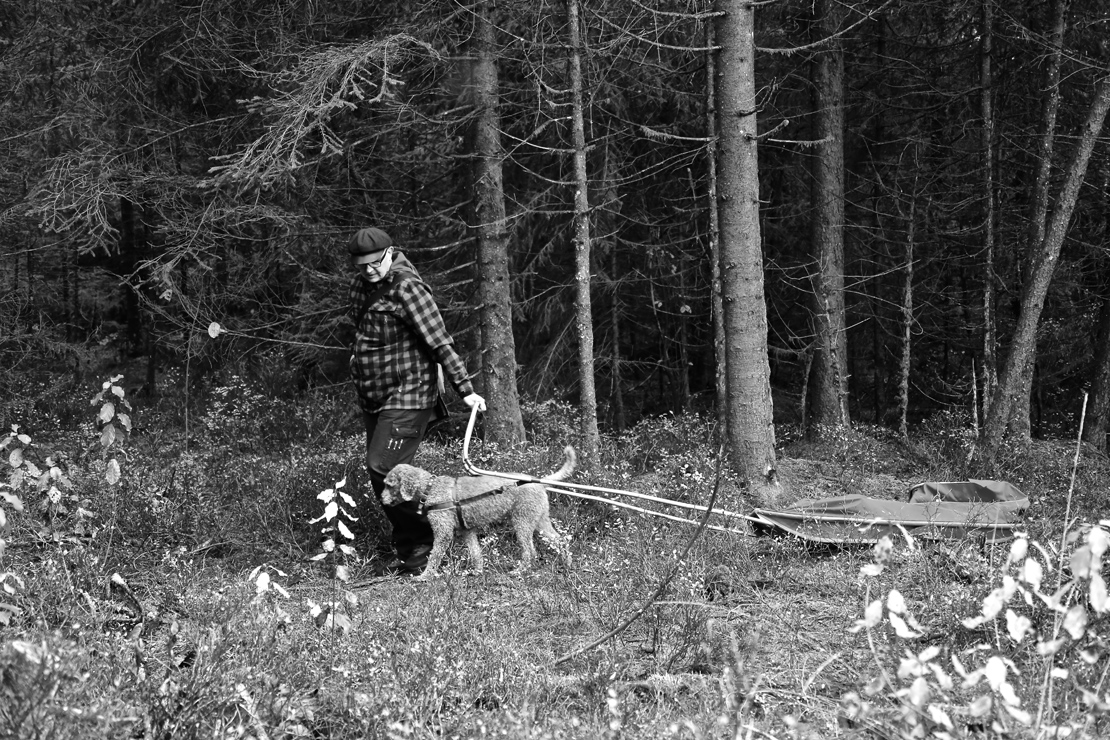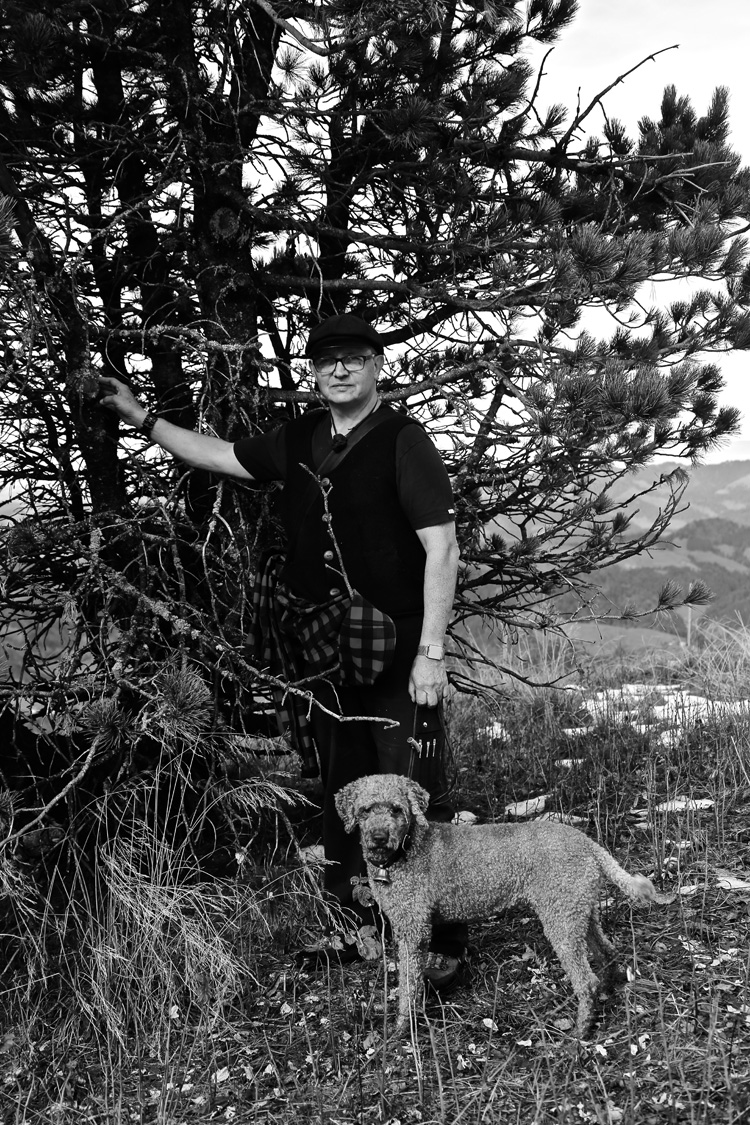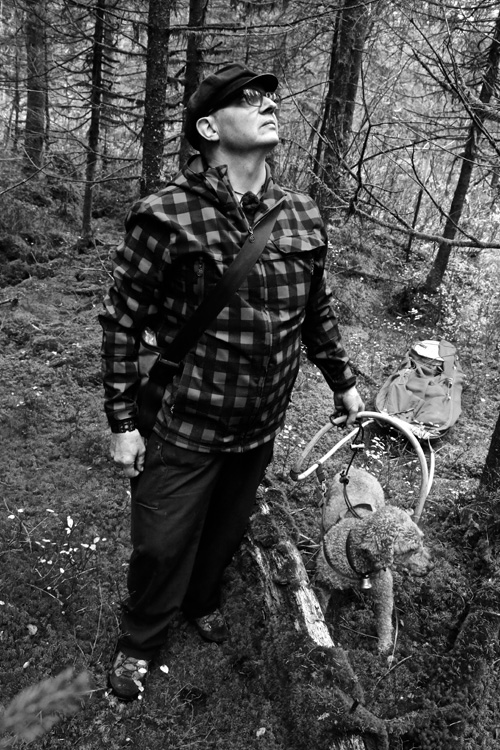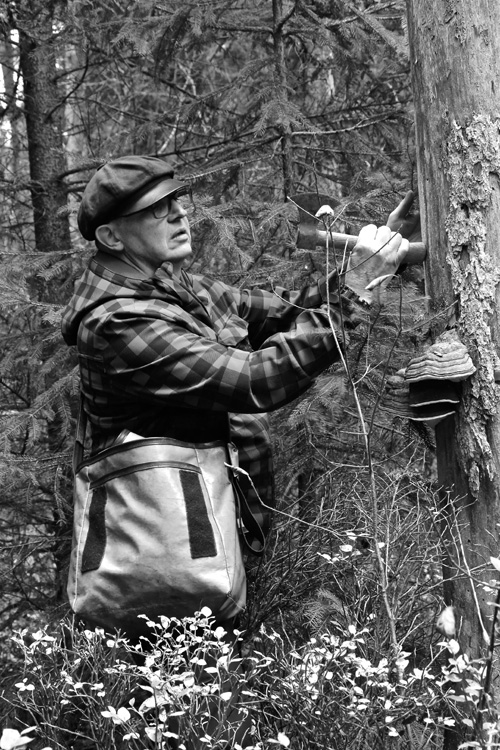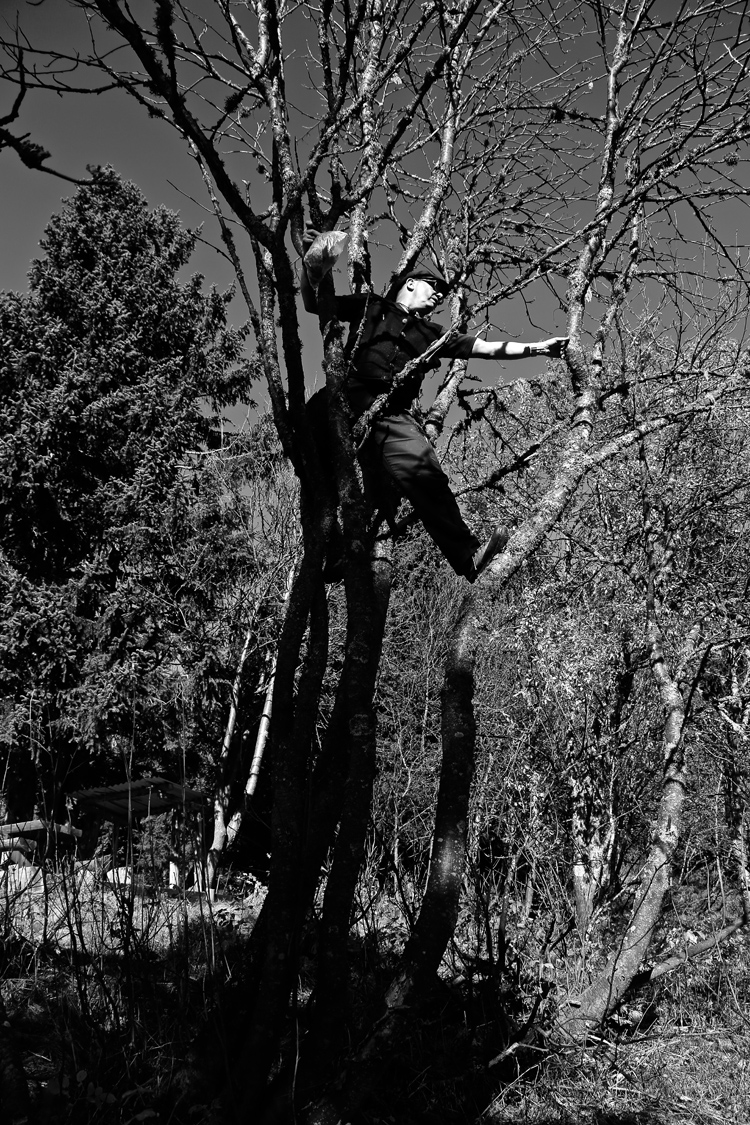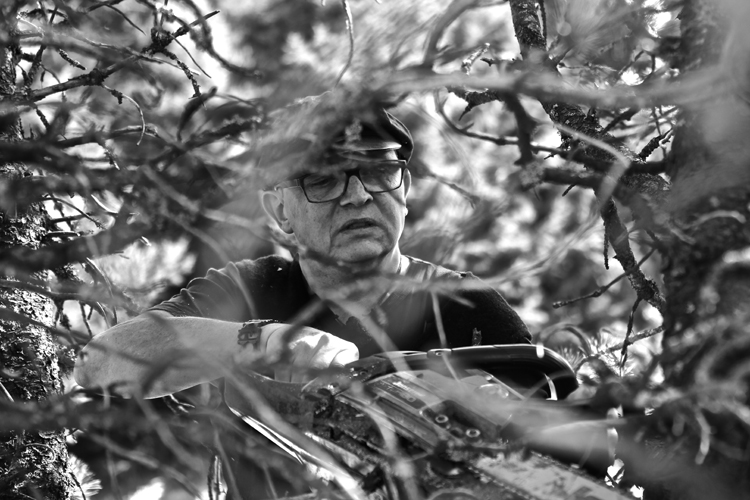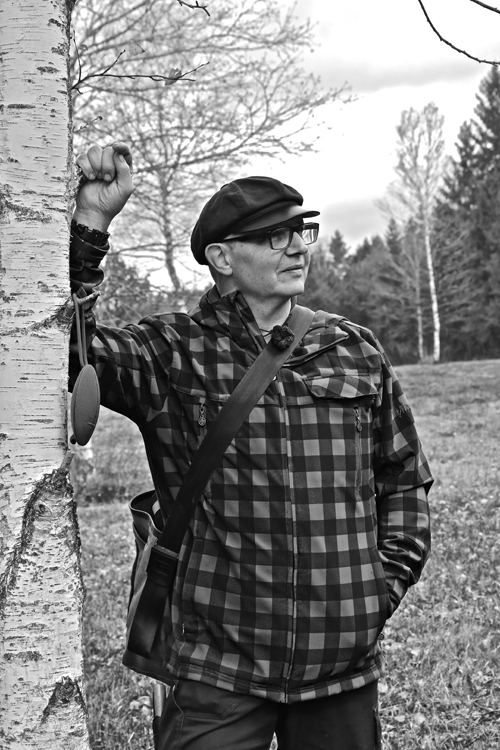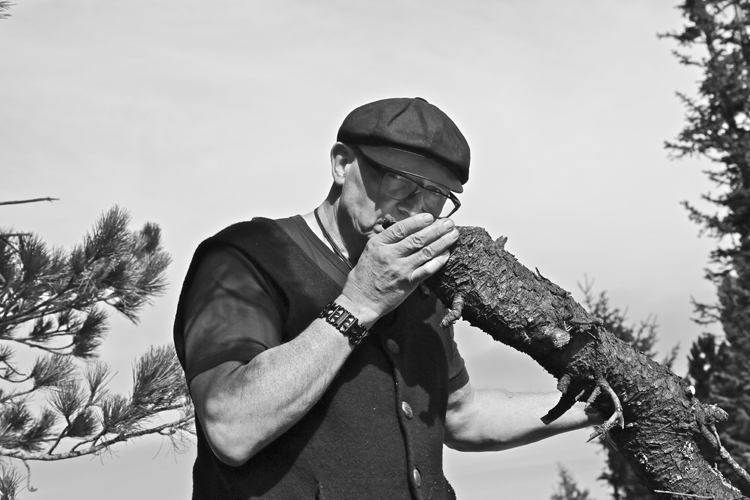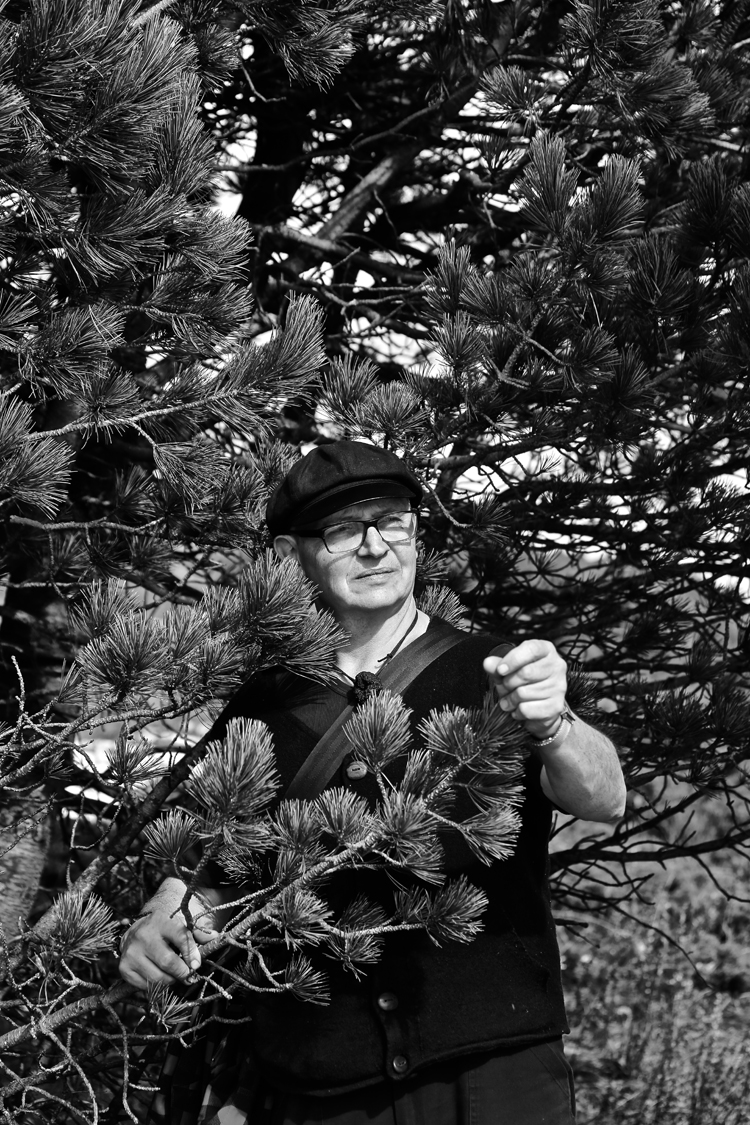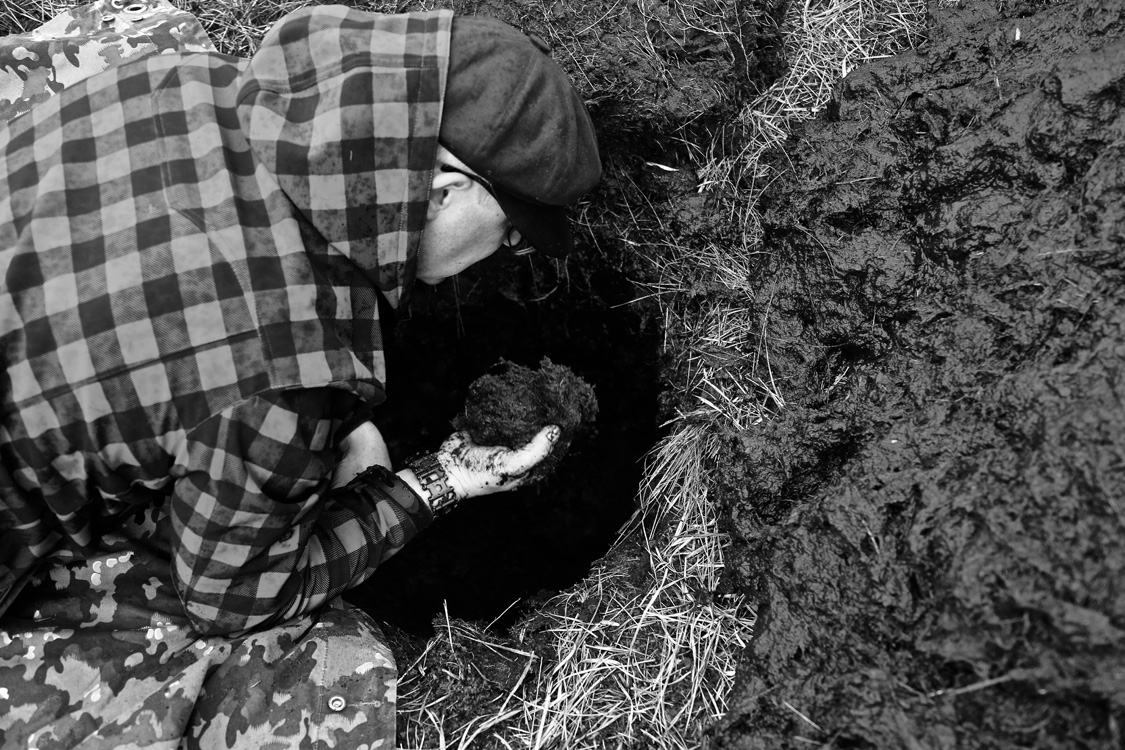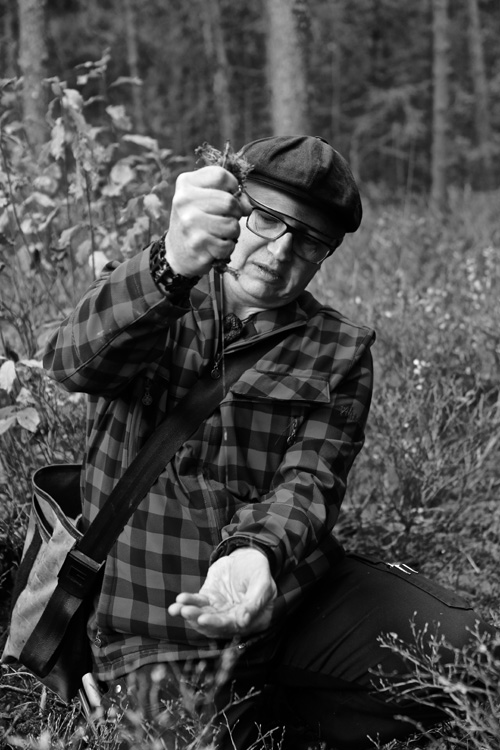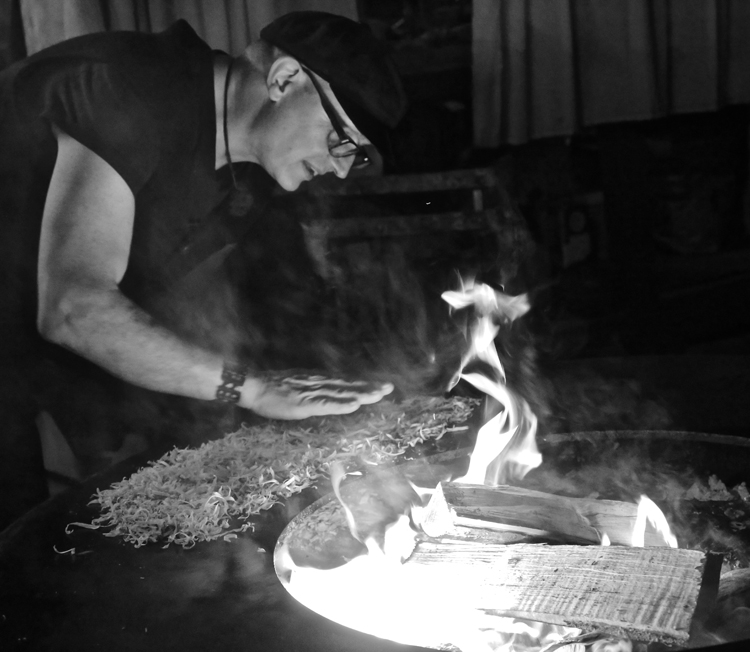Chefs Cooking demonstrations 2018
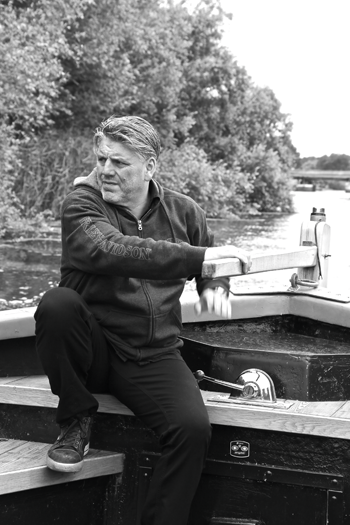 Jonnies Playground
Jonnies Playground
Jonnie Boer
De Librije, Zwolle, Netherlands
No. 34 / 50 Best 2017, ★★★
The relocation of Jonnie and Thérèse Boer’s restaurant “De Librije” has created a fantastic new haven of well-being.
Jonnie started as a chef at “De Librije” in 1986, when the restaurant was owned by Ed Meijers. He became head chef at the age of 23. A short time later, Thérèse joined the restaurant as a sommelier. They must have clicked almost immediately. They made a sensational team. No matter where or how, Jonnie and Thérèse are always mentioned in the same breath. In 1993 they purchased the restaurant, situated on a picturesque canal in the Dutch town of Zwolle. In 2008 they embarked on a brave new adventure, opening Librije’s Hotel in a lovingly-restored women’s prison. They established a second restaurant within the hotel; Librije’s Zusje (literally: younger sister) was swiftly awarded two Michelin stars. De Librije itself has long held three stars. But two major restaurants in their own characteristic style proved to be too much for one small town. Zusje therefore moved into the Waldorf Astoria in Amsterdam, where Jonnie and Thérèse continue to provide their culinary direction. The “old” De Librije was closed and has now moved into the spacious hotel atrium, spread out beneath an imposing glass roof. Guests can gaze up into the sky, and almost feel the sun, clouds, rain and snow on their skin, or be enveloped by the night. The change in location was a good idea. For everyone. The atmosphere feels like that of a “start-up”. Everyone is motivated, their faces lit up with a smile, creating a terrific atmosphere. An exhilarating experience for guests. Recently, Jonnie & Thérèse opened a beach restaurant on Bonaire: Brass Boer. Jonnie sparkles with energy; never has he cooked better, never has his characteristic style been clearer or more concise. The chef’s love of nature can also be seen in the objects dotted around the restaurant. Germinating vegetables, a glass of tadpoles – so that customers can observe their development, says Boer. But it is he who is the true child. In the middle of the restaurant stands a tree which he dug up in the nearby town of Giethoorn where he was born. The legendary chef’s table has also found a home here. This restaurant is a place where guests experience great culinary skill in a relaxed and informal atmosphere.
www.librije.com
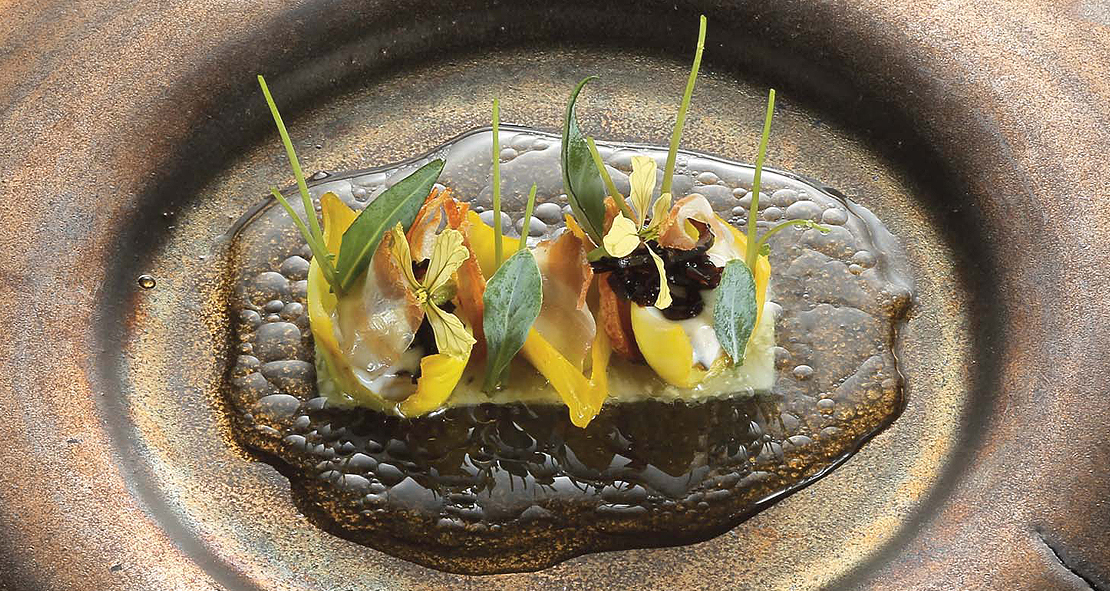
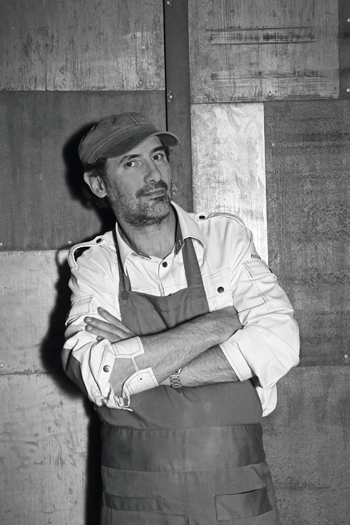 Far out, somewhere in Shanghai
Far out, somewhere in Shanghai
Paul Pairet
Ultraviolet ★★★, No. 8 / 50 Best of Asia, No. 41 / 50 Best 2017
Shanghai, China
Possibly the world’s most way-out restaurant, Ultraviolet is an experience like no other. Even getting there is an extraordinary process. Search for the address and you’ll find it’s simply ‘somewhere in Shanghai’. To get to this exclusive location, you first turn up at Mr. & Mrs. Bund, Pairet’s other restaurant. From there you are taken to a secret address ‘somewhere in Shanghai’. The room is windowless. There is just one table, which seats ten and is surrounded by projection surfaces. Then begins what Paul describes as ‘psycho tasting’. It’s eating with all your senses. With every dish, the entire room is transformed – its appearance, its smell, its sound, even its temperature. Game is served in the middle of a cool forest, seafood amid roaring surf and refreshing sea breezes. Every course is its own self-contained world. Service is equally unconventional. It’s one big spectacular show, with outstanding food that recognises no constraints and cuts across established boundaries. French by birth, Paul Pairet came to Shanghai in 2005. His concept for Ultraviolet is said to have been 15 years in the making.
www.paulpairet.com
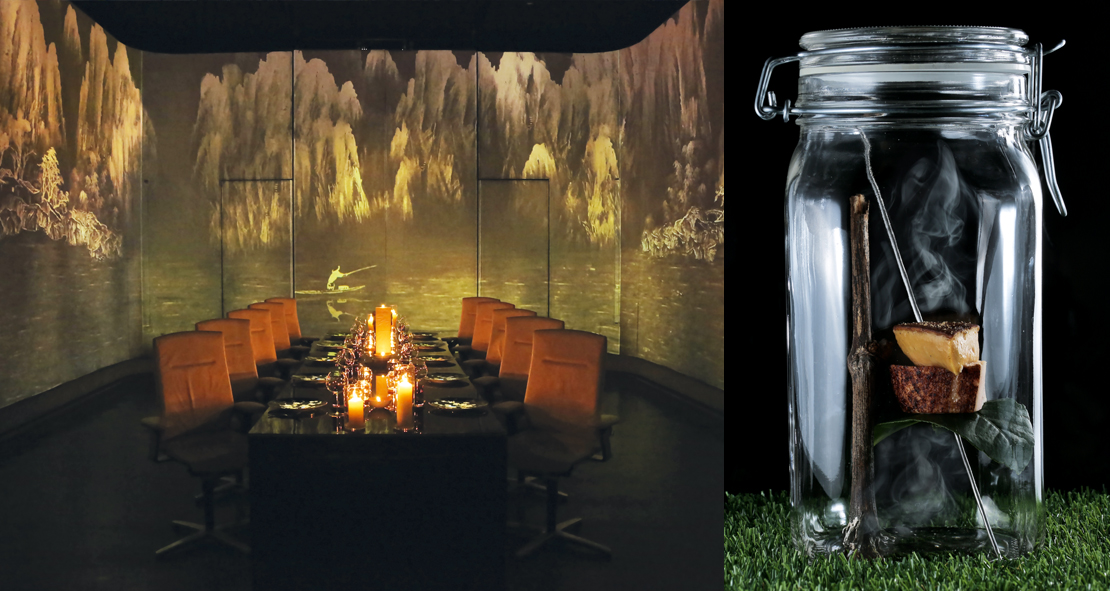
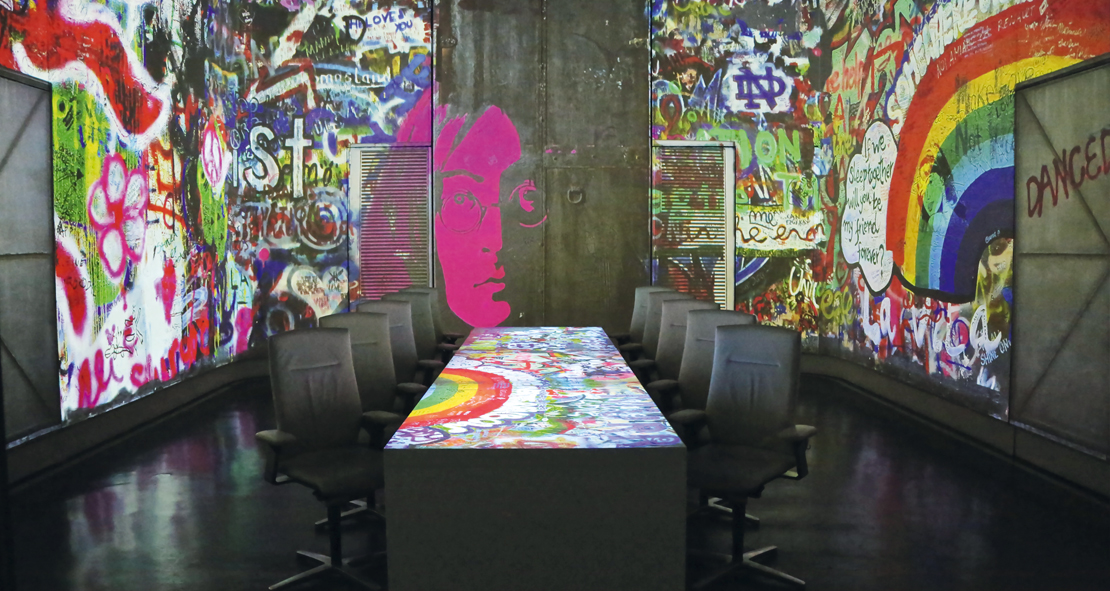
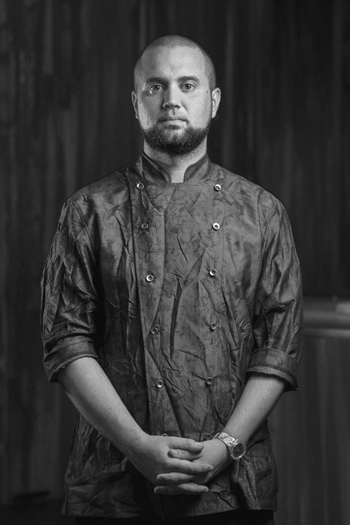 The Enigma concept of Albert Adrià and Oliver Pena
The Enigma concept of Albert Adrià and Oliver Pena
The great riddle
Enigma – the term derives from the Greek word for “riddle”. Since 2017, there’s also a restaurant with this name. And it’s part of Albert Adrià’s culinary pleasure park El Barri in the heart of Barcelona. A restaurant concept that wants to become a world leader, the position that the El Bulli of brother Ferran with Albert once occupied. To this end, the premises have been designed in an absolutely spectacular way and the restaurant offers avant-garde fine dining at the front end of the creative market. This time not conceived by Ferran, but by Albert Adrià. As the head chef, Adrià has appointed Oliver Peña, who once managed Adrià’s Cocktail Bar 41°.
The enigmatic is intended to remain enigmatic. Photos can’t be published without permission. And even though, due to this restrictive photo rule, the Enigma flies under the radar of the popular media, it’s as difficult to get a table there as it once was at the El Bulli. Anyone lucky enough to get a booking must first pay a fee of 100 euros, which is later offset against the cost of their meal. In the event of a no-show, this system mitigates the loss to the restaurant. With their booking ticket, the guest also receives a code that has to be entered on a keyboard at the plain, deliberately unspectacular entrance. Once you reach the fantastic world inside, you set off on a journey that leads through differently themed rooms, seven in all. They have names like La Planxa, 41°, La Barra or La Cava. Each room has its own theme, its own dishes and its own drinks.
Despite the impressive 7,534 square metres of space available, only 24 guests are catered to at the same time. The individual rooms only seat six people at a time. After more than four hours, the guest arrives at their destination.
The Enigma is represented at the Chefs®evolution by Oliver Peña, who is regarded as one of the best chefs in Spain. At the age of 17, he entered the restaurant business as a waiter. At 18, he attended the Hofmann Hotel Management School and afterwards jobbed his way through a whole series of restaurants of local note. In 2004, he succeeded to the post of patissier at the El-Bulli Hotel Sevilla. Before joining the 41° team, he made two more professional stopovers: the first was at the Tragabuches in Ronda and the second at the Comerc 24, another Michelin-starred restaurant in Barcelona.
Since the 41° closed in August 2013, Oliver Peña has been working with Albert Adrià on the Enigma Project as the coordinating Creative Director. After all, tasks of this calibre can only be delegated to the best in the team.
www.enigmaconcept.es
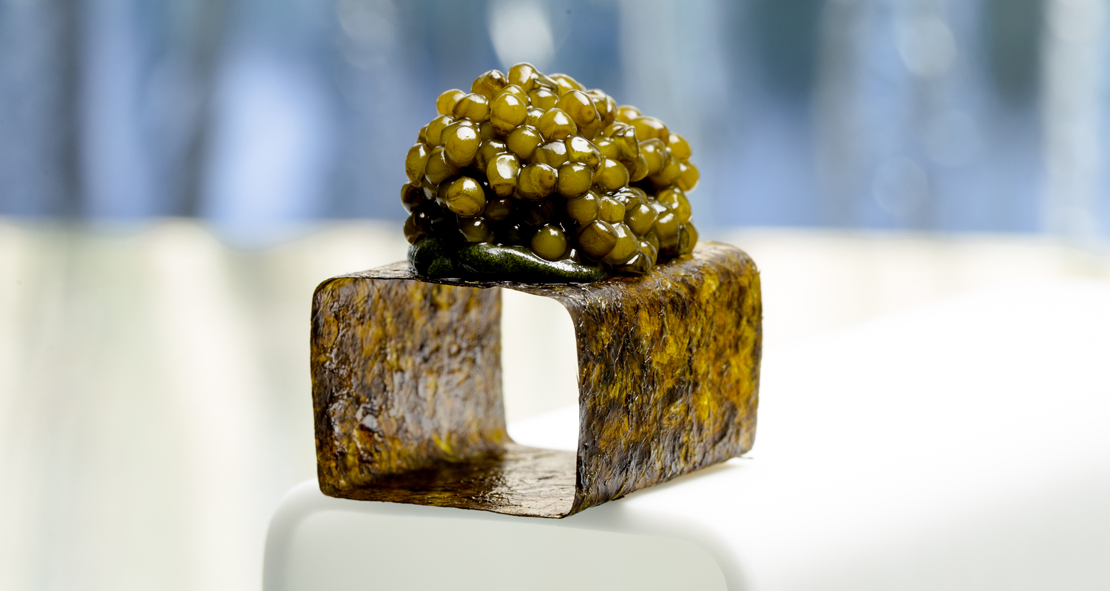
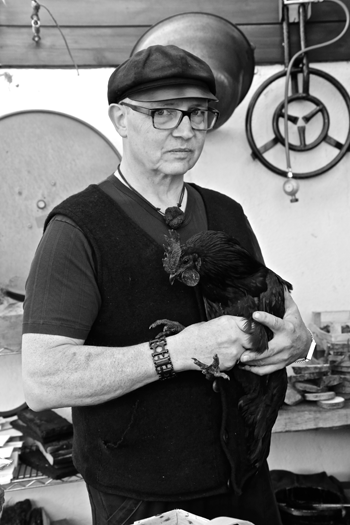 The Wizard of Entlebuch – “I’ve cooked a car”
The Wizard of Entlebuch – “I’ve cooked a car”
Stefan Wiesner
Rössli ★, Echolzmatt / Switzerland
Cooking is an art, says Stefan Wiesner – and in art, anything is allowed. Thus, Wiesner well and truly challenges the classic art of cooking with his avant-garde natural cuisine or “Avantgardistischen Naturküche” (a name which he has copyrighted). As he roams over the moors and mountains with his druidic knife, searching for unusual ingredients for his extravagant creations, he is more reminiscent of a shaman than a cook. In his dishes, he combines the knowledge of a chef with that of a herbalist, archaeologist, geologist, biologist and perfumer. His dishes are alchemical, unexpected, experimental and emotional. Raw peat with chocolate and sea salt, eel smoked with tree fungi and spruce, served with spruce sprouts, pine nuts and spruce cambium. He “cooks” entire cars or building sites. Meanwhile, as a guest, you discover that buffalo-milk rice pudding with iron rust tastes really good. Wiesner processes anything and everything; stone, horn, wood, snow and rust, or simmers things in hot tar – all of which has earned him the nickname “the Wizard of Entlebuch”.
What is Wiesner’s aim? “Our dishes combine enjoyment with an awareness that is based on a conscious philosophy,” explains this university lecturer in the culinary art, “Cooking is ethics, ecology, culture, architecture, aesthetics and art – but above all, knowledge and skill.”
www.stefanwiesner.ch
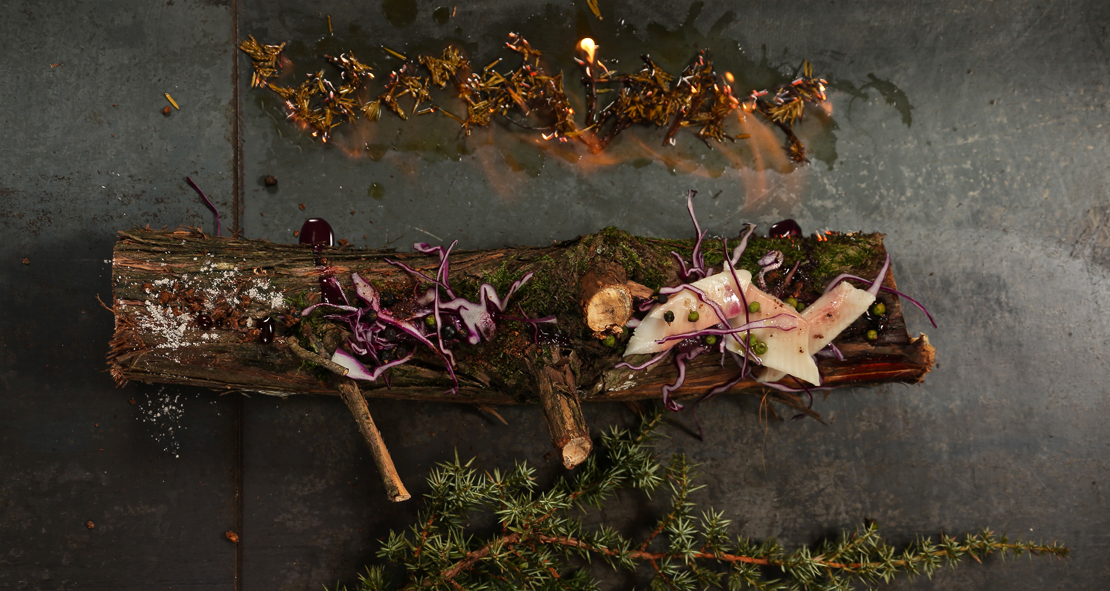
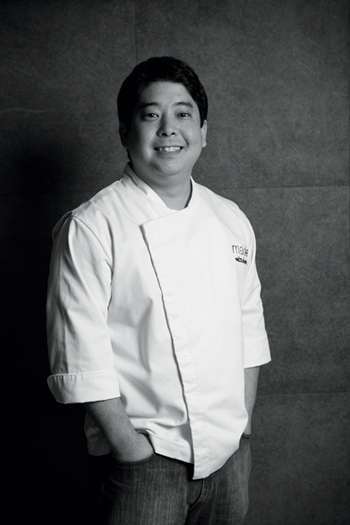 Nikkei Food – Peruvian-Japanese Blend
Nikkei Food – Peruvian-Japanese Blend
Mitsuharu Tsumura
Maido, No. 8 / 50 Best 2017, No. 1 / 50 Best Latin America
Lima, Peru
Two years ago we already introduced another cook from Lima, Virgilio Martinez. There is a very good reason for this, as there is hardly another city to have developed into one of the most important culinary hotpots worldwide as Lima has done. The food scene here is led by three great personalities and representatives of the “new Andean cuisine”: the aforementioned Martinez from Restaurant Central, Gaston Acurio, and Mitsuharu Tsumura. The restaurant owned by the latter is ranked 8th in the World’s 50 Best, as the second Peruvian restaurant in the Top Ten. This year, it also achieved first place in the list of Latin America‘s 50 Best.
The new Andean cuisine has been shaped by the different traditions of the immigrants in destination country Peru. The staple is the homegrown produce. Thus, in the puristic, stylish Maido with its Japanese atmosphere, one encounters a wonderful cuvée of Peruvian and Japanese cuisine called “Nikkei Food”. The Nikkeis – people who, like Mitsuhara, come from Japan – have a tradition of over 100 years in Peru. Mitsuharu was born in Peru, and trained and worked in the USA and in Japan before opening his restaurant on the first floor of a modern building in Lima at the age of 28. Mitsuhara Tsumura serves Guinea-Pig Confit with Japanese-style pickled gherkins, a Nikkei Ceviche or the Short Rib Estofondo Nikkei.
www.maido.pe
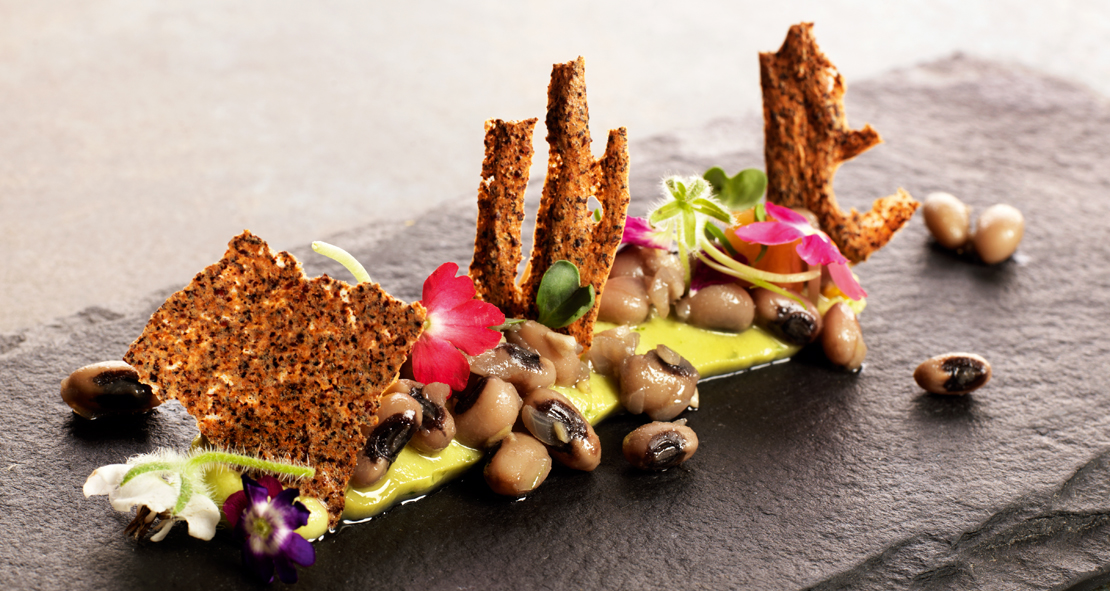
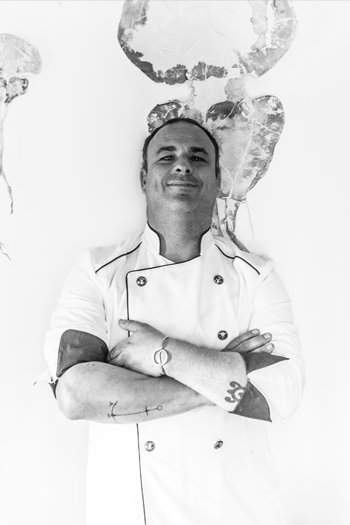 Avant-garde sea creations
Avant-garde sea creations
Ángel León
Aponiente ★★★, Cádiz
El Puerto de Santa Maria
El Chef del Mar
Ángel León works in the Spanish Province of Cádiz, very close to the Andalusian seaport of the same name. No less than three marine regions meet one another here: the Mediterranean, and both the South and North Atlantic. This has resulted in an incomparable biodiversity and led the chef to his avant-garde creations.
His restaurant Aponiente was the first 3-star restaurant in Andalusia and, in keeping with its sea theme, is housed in an old tide mill – built in 1815 – which used to grind corn, driven by the tidal rise and fall.
León’s menus are almost entirely devoted to the sea and are brilliantly attractive to look at. Herbs and plankton. Sea urchins, sardines and red mullet. Pearl oysters or liver of fish with onions. He developed his extravagant algae creations in collaboration with Spanish universities. “A restaurant can’t play with the theme of the sea if it has no sea view,” León is convinced. He’s definitely not called “El Chef del Mar” for nothing.
www.aponiente.com
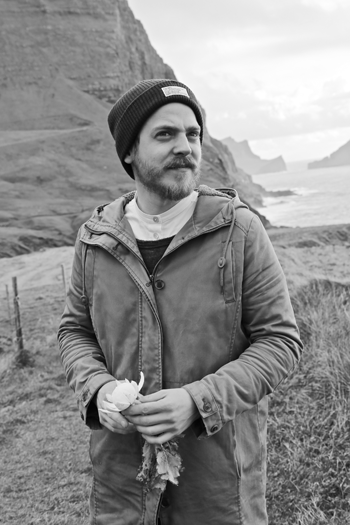 New Nordic Cuisine Extreme – High and fresh
New Nordic Cuisine Extreme – High and fresh
Poul Andrias Ziska
KOKS ★ Tórshavn, Faeroe Islands
„Best Nordic Restaurant“
Some of the foods that the descendants of the Vikings serve up seem a touch scary to central Europeans. Ram’s heads and fish are fermented in tiny huts until they develop a smell that Nordic men have learned to love, while olfactory senses more accustomed to southerly herbs are quite likely to feel assaulted. Popular dishes here include whale meat and its blubber, giblet sausages, sea fowl like gulls or fulmar, also fantastic scallops and plump sea urchins. Straight from the sea – unbeatably fresh. Poul Adrias Ziska, the youthful chef in the restaurant KOKS, gladly incorporates all of these things and diligently continues his research to make even more of the country’s resources accessible. In doing so he consistently blends the Viking traditions with the ideas and techniques proposed in New Nordic Cooking. A dainty snack disguises itself as a cheese cracker, but the spread is made of fermented fat from lamb’s tripe. Hung for months, a ham made of lamb is served simply and without any frills. The scallops come the same way, presented to the guest unprepared with just a knife to prise open the shells. Ziska frequently conceals the dish below a layer of herbs, cress or vegetables. Underneath the guests discover raw cod, swimming crabs or petrel. All of them present exciting experiences and uniquely flavoursome compositions.
koks.fo
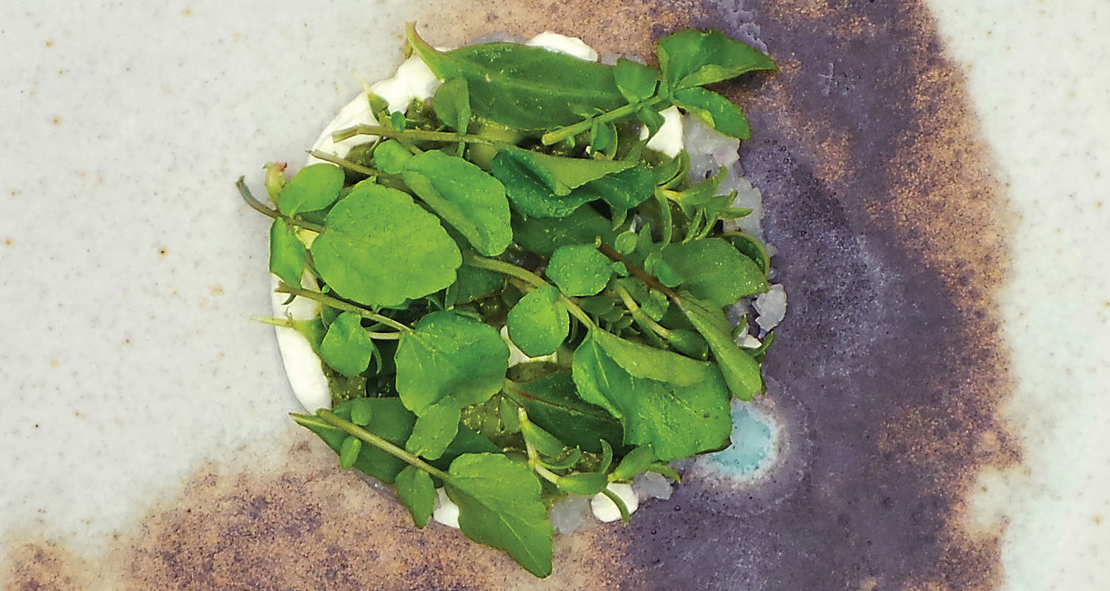
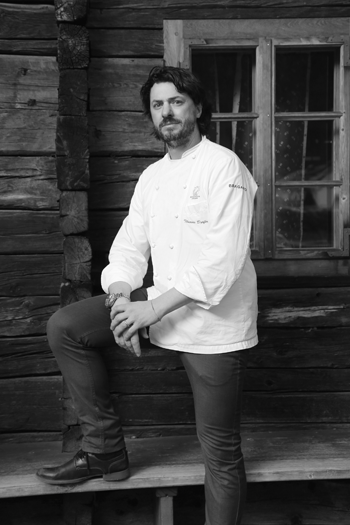 Creative and courageous, the young face of Austrian cuisine
Creative and courageous, the young face of Austrian cuisine
Thomas Dorfer
Landhaus Bacher, Chef of the Year 2009
Mautern / Wachau, Austria
Landhaus Bacher has been an Austrian institution for generations. It was Lisl Wagner-Bacher, the grande dame of Austrian cuisine, who elevated it to legend status. The restaurant won top awards, not least two Michelin stars, which lapsed in 2010 when the Guide ceased to rate chefs in Austria. Son-in-law Thomas Dorfer, who took over the baton from Lisl Bacher, was already head chef at the time. The Michelin withdrawal meant that this talented young chef was denied the international breakthrough he deserved. But Dorfer hung on in. Today he is the focal point of the Alpine culinary network and flies the flag for Austrian cuisine far beyond the country’s borders. Today the 41-year old native of the Carinthian region of Austria is without doubt one of the world’s greatest chefs. His cooking style is unique. Visitors to Landhaus Bacher will find the origins of Austrian cuisine coming through loud and clear in his dishes, along with elements of the style of Claus-Peter Lumpp, in whose team Dorfer earned his spurs. But Dorfer’s style – a confident and bold, yet casual and relaxed embodiment of the essence of modern Austrian cuisine – is very much his own. No frills, no razzamatazz. Just simple, honest and unforgettable food.
www.landhaus-bacher.at
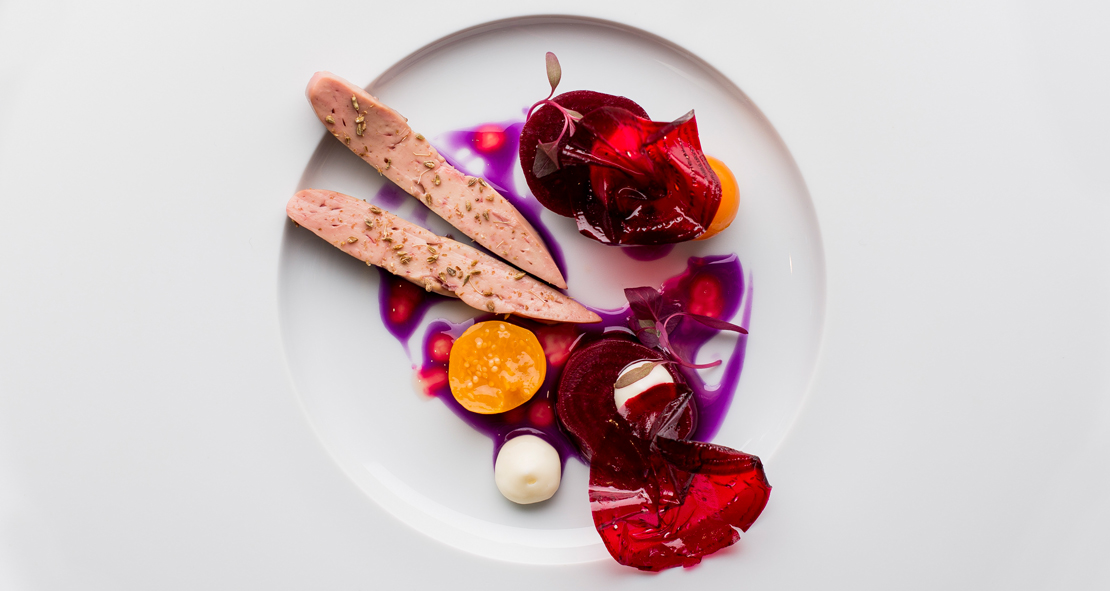
The young Berlin Avant-Garde
They belong to the third generation of top German restaurants. They are radical and successful. They are different, courageous and openly committed to a revolutionary German cuisine. Uncompromising, sometimes provocative, unadorned – and with completely new flavours.
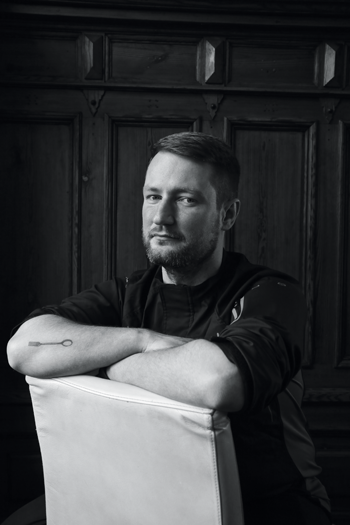
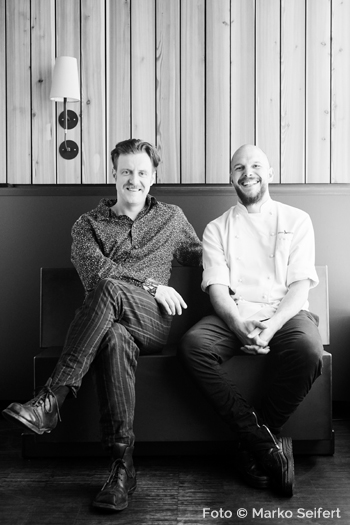
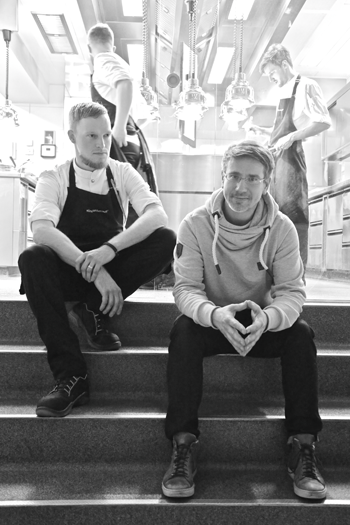
Sebastian Frank, Horváth ★★
With Sebastian Frank as head chef, the Horváth enjoyed a rapid upswing (the first star was awarded in 2011), but also a stormy, creative development. When the managers become involved in other things in 2014, Jeannine Kessler and Sebastian Frank took over the restaurant under their own management. Today, it has one of the most creative cuisines on German soil, and Frank is something of the culinary mastermind behind a new Berlin scene, which deals with the Nova Regio cuisine in various shades.
www.restaurant-horvath.de
Micha Schäfer & Billy Wagner, Nobelhart & Schmutzig ★
Nobelhart & Schmutzig dishes are made exclusively from local ingredients, are reduced and original in flavored. In addition, the cuisine is completely without traditional luxury products. That meets the spirit of the times.Host Billy Wagner and chef Micha Schäfer call their cuisine style brutally local.
www.nobelhartundschmutzig.com
Andreas Rieger & Ivo Ebert, Einsunternull ★
einsunternull has won a lot of friends in a short time as gastronomic as well as culinary concept, friends who consider it one of the most important restaurants of the new cuisine in Germany. And yes, this cuisine is different and has very little to do with the traditional French cuisine and its offshoots. Andreas Rieger does not stick to the traditional full-course meal procedures, or only to a very small extent. He believes that what matters is which dish follows and not to work through the dishes from raw to cooked, from fish to meat, and finally to something sweet.
www.einsunternull.de












